Most of the best statistics software for Mac comes with a hefty price tag, but in recent years, several more affordable and user-friendly options have emerged.
While we can’t promise that the free tools below match the analytical power of professional software like SPSS, JMP or Minitab, there are some surprisingly capable options – especially for students or those on a budget.
Be aware that free statistical applications typically come with limitations, including fewer features, weaker documentation, and less intuitive interfaces. However, if you’re willing to spend time learning them, they can still deliver excellent results.
With that in mind, here’s our list of the best free statistical analysis software for Mac.
| Best For | Type | Free / Freemium | |
|---|---|---|---|
| R Project | Advanced statistical analysis and data modeling | Open-source programming environment | ✅ Free |
| RStudio Desktop | Data scientists using R in a professional IDE | IDE for R language | ✅ Free |
| JASP | SPSS-style analysis without coding | GUI-based statistical package | ✅ Free |
| PSPP | Social science and survey data analysis | SPSS-compatible tool | ✅ Free |
| SAS University Edition | Students and educators needing professional-grade tools | Full-featured virtual SAS environment | ✅ Free (academic only) |
| GNU Octave | MATLAB-style numerical computation | Open-source numerical analysis | ✅ Free |
| SOFA (Statistics Open For All) | Beginners wanting easy, visual reporting | User-friendly GUI stats app | ✅ Free |
| Apple Numbers | Basic data analysis and visualization | Spreadsheet application | ✅ Free (included with macOS) |
| Mathematica Student Edition | Symbolic and numerical analysis for academics | Advanced mathematical software | ⚙️ Freemium (discounted academic license) |
| MacAnova | Variance, time-series, and matrix algebra analysis | Command-line statistical package | ✅ Free |
| Root | Scientific big data and C++ analysis | Modular statistical framework | ✅ Free |
| G*Power | Statistical power and sample size calculations | Specialized power analysis tool | ✅ Free |
| Regress+ | Simple regression and bootstrapping | Basic regression app | ✅ Free |
Table of Contents
1. R Project

Best for: Advanced users and researchers who need a fully featured, professional-level tool.
R Project is an incredibly powerful open-source tool for statisticians and researchers, capable of handling virtually any statistical or data analysis task. It can rival paid tools such as Stata or SPSS in analytical power.
However, R’s learning curve is steep. Its interface is code-based and lacks the ease of use of GUI-based software. You can make R more approachable by installing a graphical front end such as R Commander or RStudio (see below).
Although R requires more manual setup, it’s completely free and supported by a vast community and extensive packages. If you’re willing to invest the time to learn it, R offers unparalleled flexibility at no cost.
2. RStudio Desktop
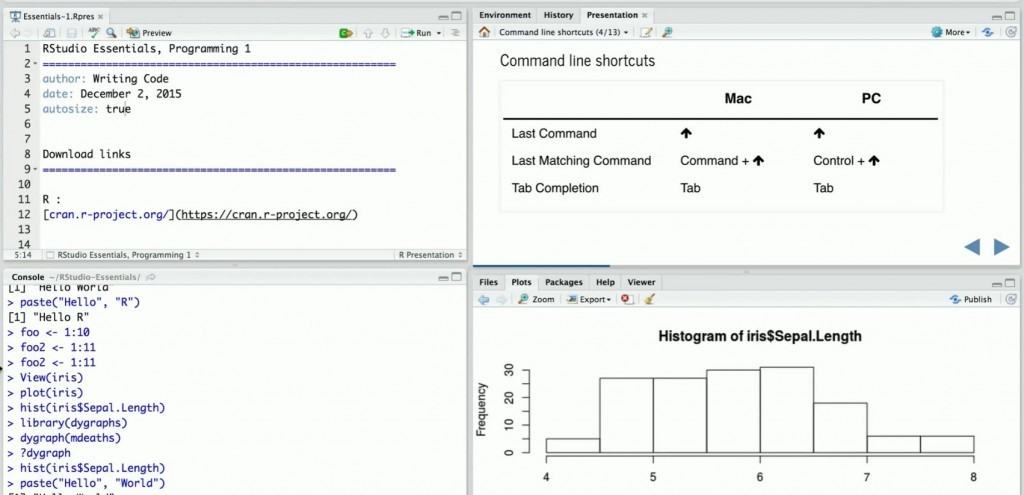
Best for: Data scientists and analysts who want a professional IDE for R
RStudio is a powerful open-source interface that makes working with R far easier. It’s not a statistical package itself but an Integrated Development Environment (IDE) that lets you code, visualize, and analyze data more efficiently.
You can run RStudio on your Mac desktop or via a server, and there are many webinars and tutorials available to help beginners. It’s still complex, but far more user-friendly than R Project alone.
3. JASP
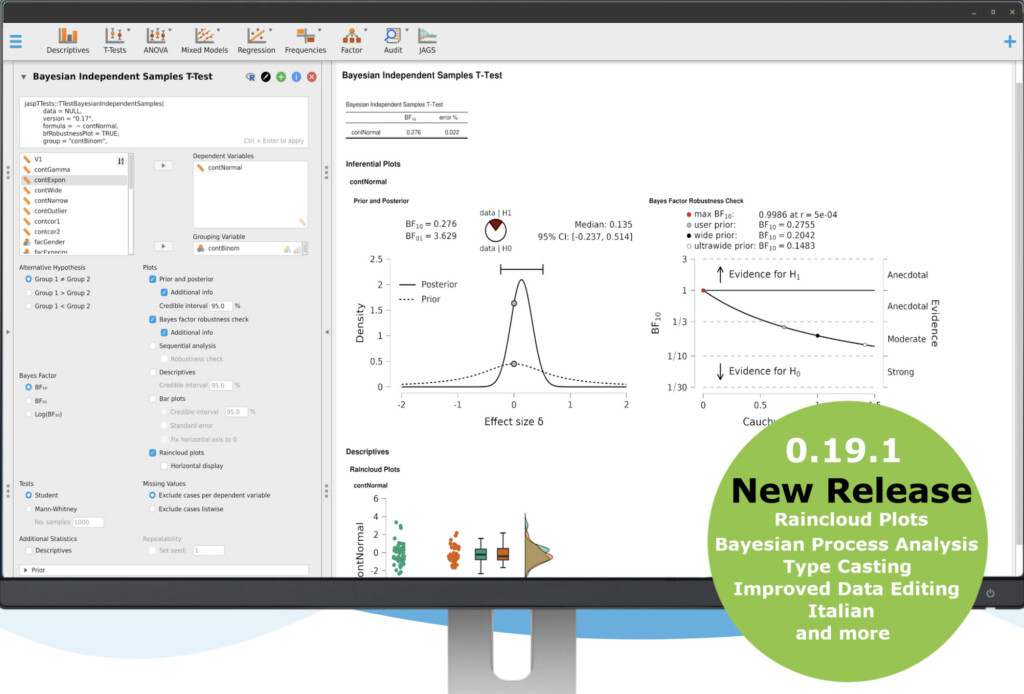
Best for: Students and researchers who want SPSS-style analysis without coding
Developed by the University of Amsterdam, JASP is an intuitive open-source alternative to SPSS. It supports both frequentist and Bayesian methods and includes options for regression, t-tests, ANOVA, and more.
The interface is clean and simple, with automatic generation of publication-ready tables and graphs. It’s one of the best free options for users who prefer point-and-click statistics over programming.
4. PSPP
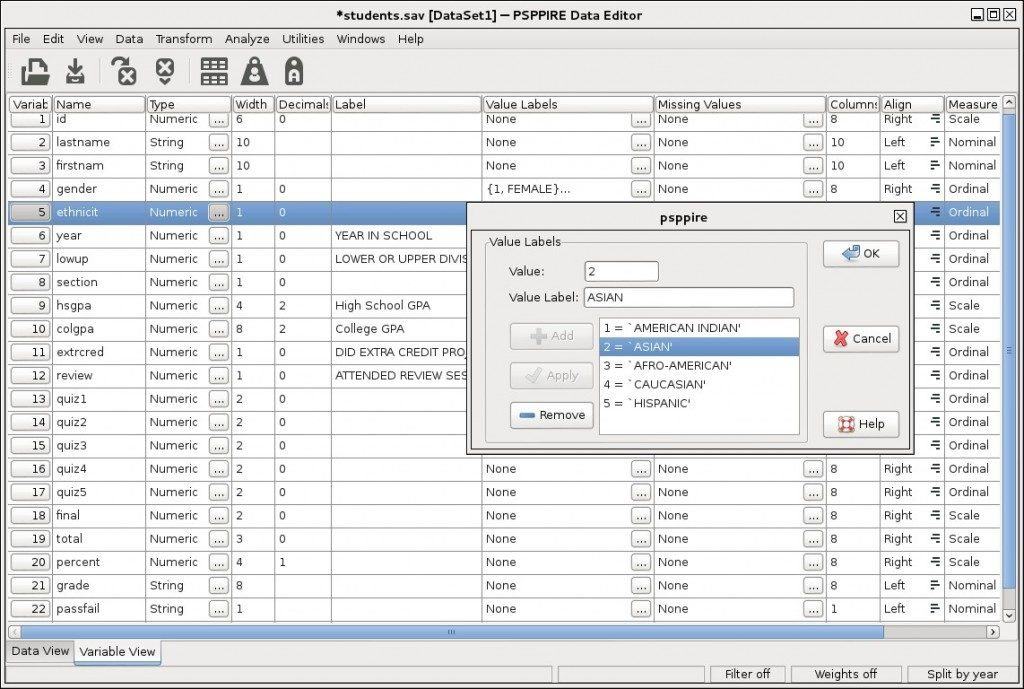
Best for: Social scientists who want a free SPSS alternative.
PSPP is designed as a free substitute for SPSS and supports many of the same tests – including t-tests, ANOVA, factor analysis, chi-square tests, and non-parametric tests.
It’s ideal for analyzing sampled data, especially for students and researchers who need quick, structured results. While the interface feels dated, PSPP’s compatibility with SPSS syntax makes it a good fit for those already familiar with IBM’s software.
5. SAS University Edition
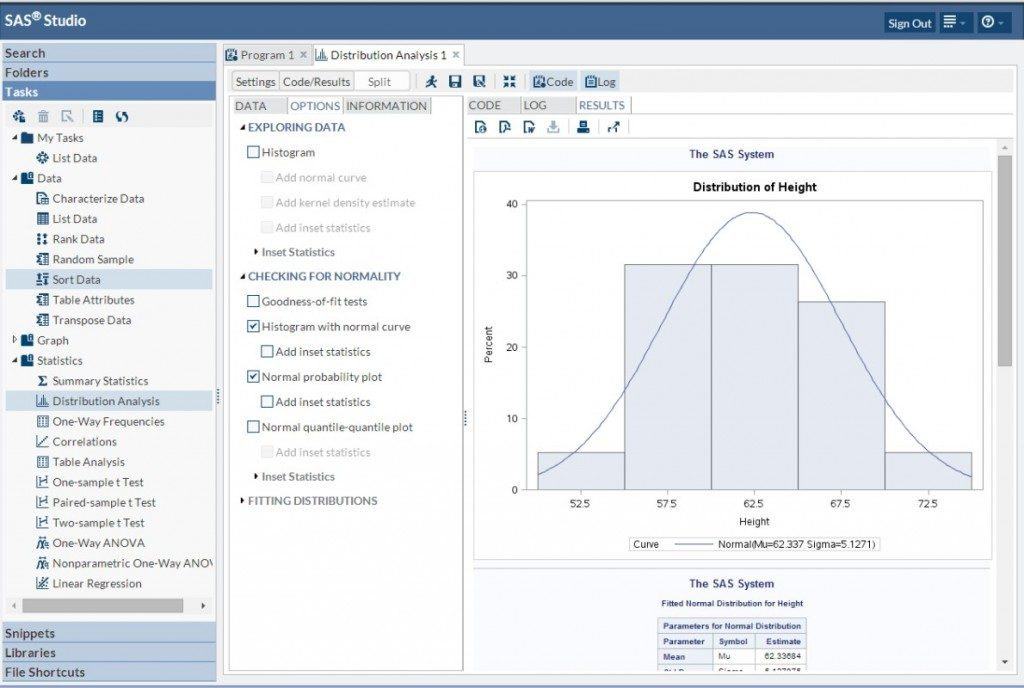
Best for: Students and educators who need professional-grade tools
SAS University Edition offers the same core features as commercial SAS software, but it must be run in a virtual machine on your Mac.
It’s available for free to students and educators and includes advanced tools for data analysis, visualization, and statistical modeling. Despite the setup hassle, it’s arguably the most comprehensive free statistical software available.
6. GNU Octave
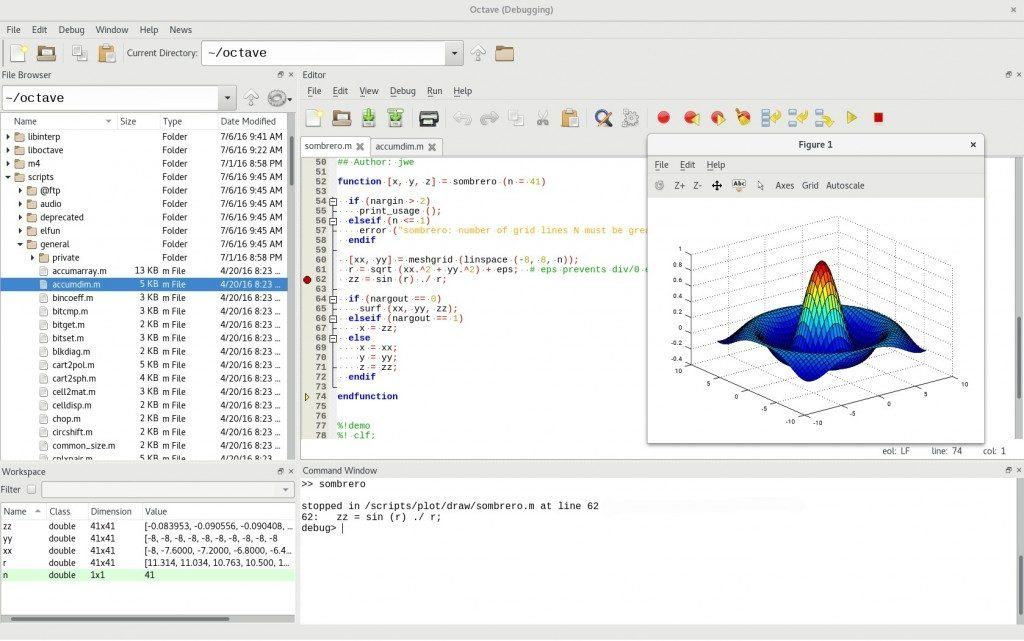
Best for: Users familiar with MATLAB or numerical computing
GNU Octave is an open-source alternative to MATLAB, designed for numerical computations, solving linear and nonlinear problems, and performing advanced data visualization.
It’s primarily command-line-based, so it’s better suited for technically skilled users or those with MATLAB experience. For complex numerical modeling, Octave is a powerful and cost-free option.
7. SOFA
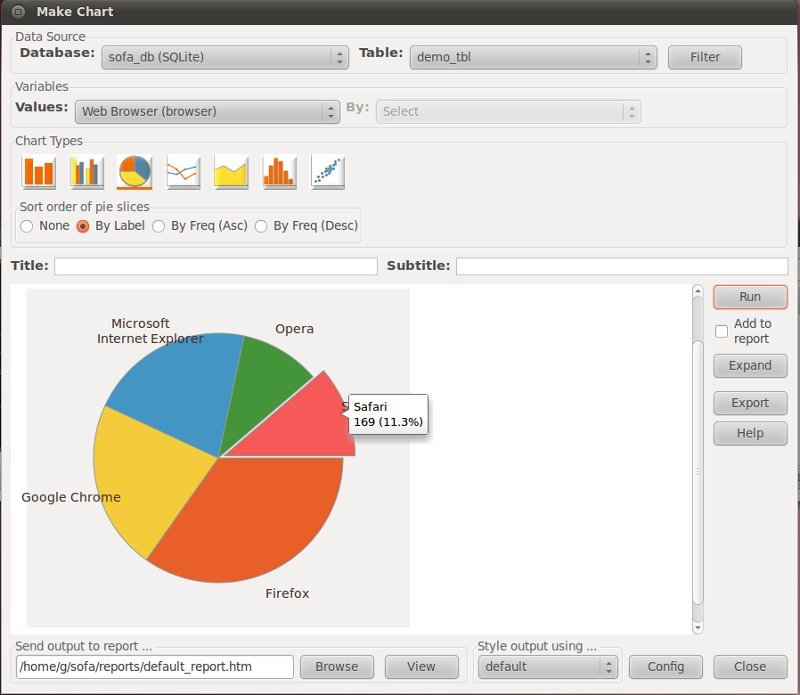
Best for: Beginners who want an easy-to-use stats app
SOFA (Statistics Open For All) is a user-friendly, open-source statistics and reporting program that focuses on simplicity and attractive visual output.
It’s ideal for users who find R or PSPP intimidating. While it’s not as powerful as R or JASP, it’s easy to install, runs smoothly on Mac, and produces clear, visual reports.
8. Apple Numbers
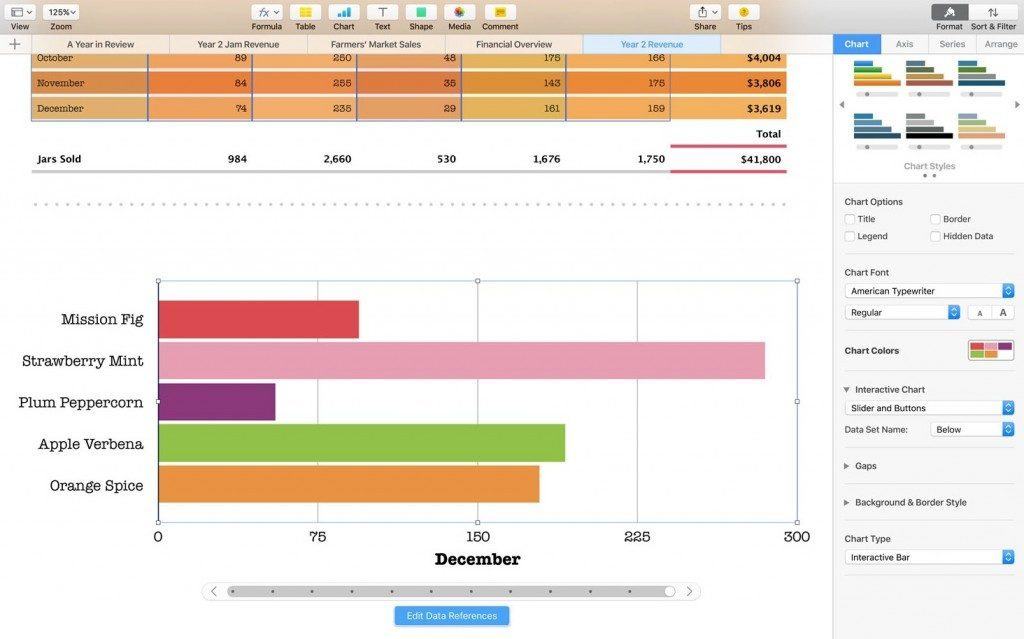
Best for: Basic statistical analysis and data visualization.
Apple Numbers is one of the best alternatives to Excel for Mac but nowadays has evolved beyond being a simple spreadsheet tool. It now includes features such as conditional highlighting, interactive charts, and smart filters that make simple data analysis intuitive.
It’s not suitable for complex tests like ANOVA or regression, but for basic descriptive statistics and data presentation, it’s an excellent free option already included with macOS.
9. Mathematica Student Edition

Best for: Academic users needing symbolic and numerical computation
Developed by Wolfram, Mathematica Student Edition supports a vast range of mathematical, statistical, and symbolic operations. It’s ideal for engineers, economists, and scientists who need both computation and visualization tools.
Although it’s not entirely free, it’s heavily discounted for students and educators, and its natural-language input makes it easier to use than many technical packages.
10. MacAnova

Best for: Academic users needing time-series or variance analysis
MacAnova is an older, open-source statistical package for Mac and Windows. Despite its age, it still supports analysis of variance, matrix algebra, and time-series analysis.
Its interface is largely command-line driven, but some functions are accessible through menus. MacAnova is niche but functional for those who prefer a lightweight, script-based approach.
11. Root
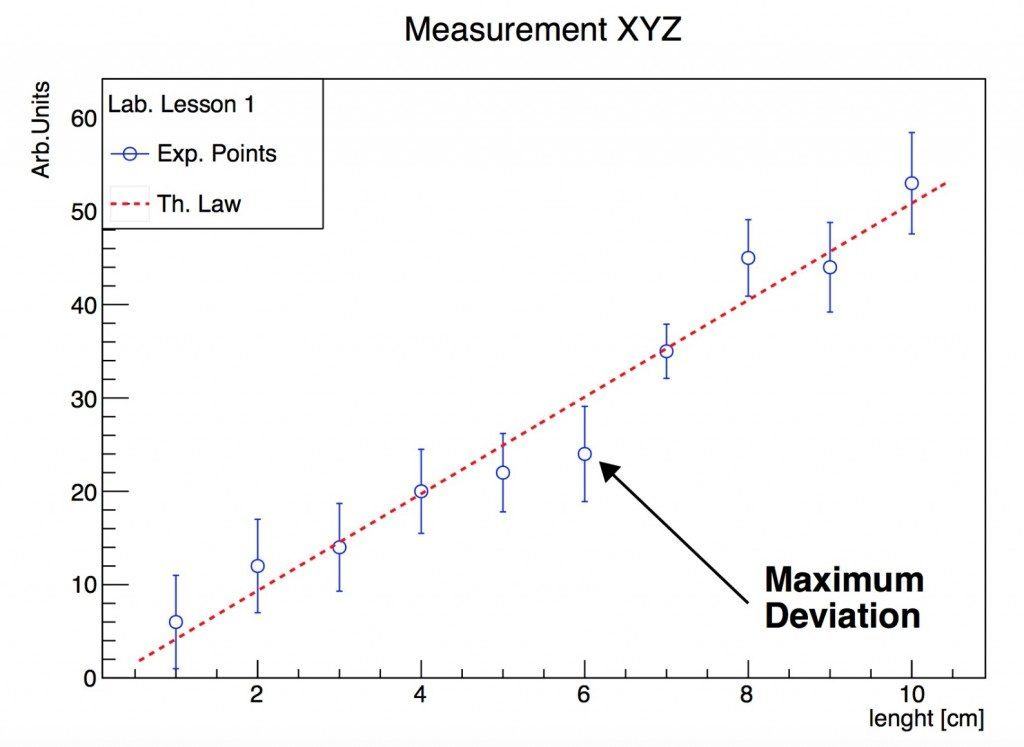
Best for: Programmers analyzing large scientific datasets.
Originally developed at CERN, Root is a modular framework for big data processing, statistical analysis, and visualization. It’s written primarily in C++ and integrates with Python and R.
Root is extremely powerful but requires programming knowledge, making it more suitable for researchers and developers in scientific computing.
12. GPower

Best for: Power and sample size calculations.
G*Power is a small but useful free tool for performing power analyses for tests such as t-tests, F-tests, chi-square tests, z-tests, and more.
It can also compute effect sizes and display graphical summaries. It’s lightweight, fast, and ideal for planning research studies.
13. Regress+
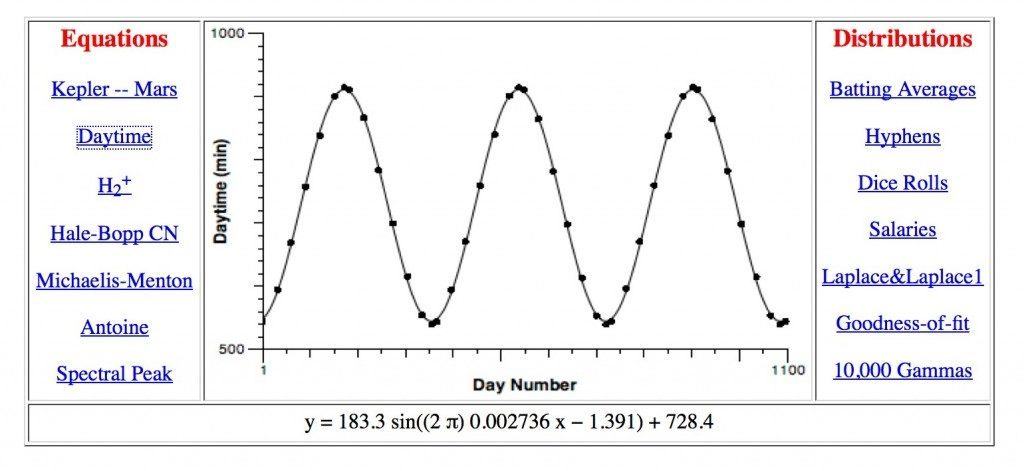
Best for: Simple regression and bootstrapping.
Regress+ is an older Mac app that handles regression, stochastic modeling, and bootstrapping. It’s limited by today’s standards but still useful for teaching and basic regression tasks.
Conclusion
If you want maximum analytical power, start with R Project or RStudio.
For ease of use, try JASP or SOFA. If you’re a student or educator, SAS University Edition or Mathematica Student Edition offer excellent professional-grade tools for free or at reduced cost.


